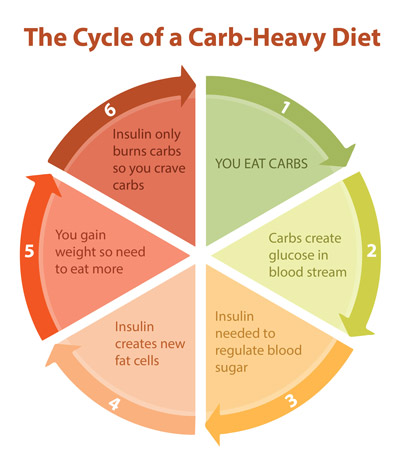All Categories
Featured
Table of Contents
-1
Leaders of army bases ought to examine their facilities to determine and get rid of conditions that encourage one or more of the consuming routines that advertise obese. Some nonmilitary companies have actually raised healthy eating choices at worksite eating facilities and vending machines. Numerous publications suggest that worksite weight-loss programs are not extremely reliable in decreasing body weight (Cohen et al., 1987; Forster et al., 1988; Frankle et al., 1986; Kneip et al., 1985; Loper and Barrows, 1985), this might not be the instance for the military due to the better controls the military has over its "employees" than do nonmilitary companies.
-1Nourishment experts can give individuals with a base of information that allows them to make experienced food options. Nutrition counseling and nutritional monitoring have a tendency to focus even more directly on the inspirational, emotional, and emotional issues associated with the current job of weight loss and weight monitoring.
-1Unless the program individual lives alone, nourishment management is seldom effective without the participation of family participants. Weight-management programs may be divided into 2 stages: weight-loss and weight upkeep. While exercise may be the most vital aspect of a weight-maintenance program, it is clear that dietary restriction is the critical component of a weight-loss program that affects the rate of weight management.
-1Thus, the energy balance formula might be influenced most significantly by minimizing energy intake. optifast. The variety of diets that have been recommended is almost innumerable, but whatever the name, all diet regimens are composed of reductions of some percentages of healthy protein, carb (CHO) and fat. The complying with sections check out a number of plans of the percentages of these 3 energy-containing macronutrients
Obesity Clinic

-1
This sort of diet plan is composed of the types of foods a patient typically eats, however in lower quantities. There are a variety of reasons such diets are appealing, but the primary reason is that the recommendation is simpleindividuals require just to comply with the united state Department of Agriculture's Food Guide Pyramid.
-1Being used the Pyramid, nevertheless, it is very important to emphasize the portion dimensions made use of to establish the suggested variety of portions. A bulk of consumers do not recognize that a portion of bread is a single piece or that a section of meat is just 3 oz. A diet regimen based upon the Pyramid is quickly adjusted from the foods offered in group settings, including army bases, considering that all that is needed is to consume smaller sized portions.
-1Much of the research studies released in the clinical literary works are based on a balanced hypocaloric diet with a decrease of power intake by 500 to 1,000 kcal from the client's normal calorie consumption. The U.S. Food and Drug Administration (FDA) suggests such diets as the "standard therapy" for medical trials of brand-new weight-loss drugs, to be used by both the active agent team and the sugar pill team (FDA, 1996).
-1The largest quantity of weight management happened early in the research studies (about the first 3 months of the plan) (Ditschuneit et al., 1999; Heber et al., 1994). One study discovered that ladies lost a lot more weight in between the 3rd and 6th months of the plan, yet males lost most of their weight by the 3rd month (Heber et al., 1994).
Medical Weight Loss – Gingin
-1In contrast, Bendixen and coworkers (2002) reported from Denmark that dish substitutes were connected with adverse end results on fat burning and weight maintenance. Nonetheless, this was not an intervention research; participants were followed for 6 years by phone interview and data were self-reported. Out of balance, hypocaloric diets restrict one or more of the calorie-containing macronutrients (healthy protein, fat, and CHO).
-1Several of these diets are released in publications focused on the lay public and are usually not written by health experts and typically are not based upon audio scientific nourishment principles. For some of the dietary regimens of this type, there are few or no research study magazines and practically none have been researched long term.
Weight Loss Specialist ( Gingin)
-1The major sorts of out of balance, hypocaloric diet regimens are talked about listed below. There has actually been substantial discussion on the optimal ratio of macronutrient intake for grownups. This research usually compares the quantity of fat and CHO; nonetheless, there has actually been raising passion in the function of healthy protein in the diet plan (Hu et al., 1999; Wolfe and Giovannetti, 1991).
-1The length of these researches that examined high-protein diet regimens just lasted 1 year or less; the long-lasting security of these diets is not known. Low-fat diet plans have actually been among the most generally used treatments for excessive weight for several years (Astrup, 1999; Astrup et al., 1997; Blundell, 2000; Castellanos and Rolls, 1997; Flatt, 1997; Kendall et al., 1991; Pritikin, 1982).
-1Results of current research studies recommend that fat restriction is additionally beneficial for weight upkeep in those who have shed weight (Flatt 1997; Miller and Lindeman, 1997). Nutritional fat decrease can be achieved by counting and limiting the number of grams (or calories) eaten as fat, by restricting the consumption of specific foods (for instance, fattier cuts of meat), and by replacing reduced-fat or nonfat variations of foods for their greater fat equivalents (e.g., skim milk for whole milk, nonfat ice cream for full-fat ice lotion, baked potato chips for fried chips) (Dywer, 1995; Miller and Lindeman, 1997).
-1Numerous elements may add to this seeming contradiction. All people appear to selectively undervalue their intake of dietary fat and to lower typical fat consumption when asked to tape it (Goris et al., 2000; Macdiarmid et al., 1998). If these outcomes reflect the basic tendencies of individuals completing nutritional surveys, after that the amount of fat being eaten by overweight and, perhaps, nonobese individuals, is better than regularly reported.
Bariatrics (Gabbadah 6041)
-1They found that low-fat diets consistently demonstrated significant weight management, both in normal-weight and overweight individuals. A dose-response connection was also observed in that a 10 percent reduction in dietary fat was predicted to generate a 4- to 5-kg weight reduction in a private with a BMI of 30. Kris-Etherton and coworkers (2002) located that a moderate-fat diet regimen (20 to 30 percent of energy from fat) was most likely to advertise weight management due to the fact that it was easier for patients to abide by this kind of diet regimen than to one that was badly restricted in fat (< 20 percent of energy).

-1
Very-low-calorie diets (VLCDs) were used thoroughly for weight management in the 1970s and 1980s, but have actually dropped into disfavor recently (Atkinson, 1989; Bray, 1992a; Fisler and Drenick, 1987). FDA and the National Institutes of Wellness define a VLCD as a diet that offers 800 kcal/day or much less. weight management. Since this does not think about body dimension, an extra scientific definition is a diet plan that gives 10 to 12 kcal/kg of "preferable" body weight/day (Atkinson, 1989)
-1The servings are consumed 3 to five times per day. The primary objective of VLCDs is to generate reasonably rapid weight reduction without substantial loss in lean body mass. To achieve this goal, VLCDs generally provide 1.2 to 1.5 g of protein/kg of preferable body weight in the formula or as fish, lean meat, or chicken.
Latest Posts
Who Has The Best Yoga Transformation Body?
What Is The Best Eating Disorder Nutritionist Company Near Me
Weight Loss Support